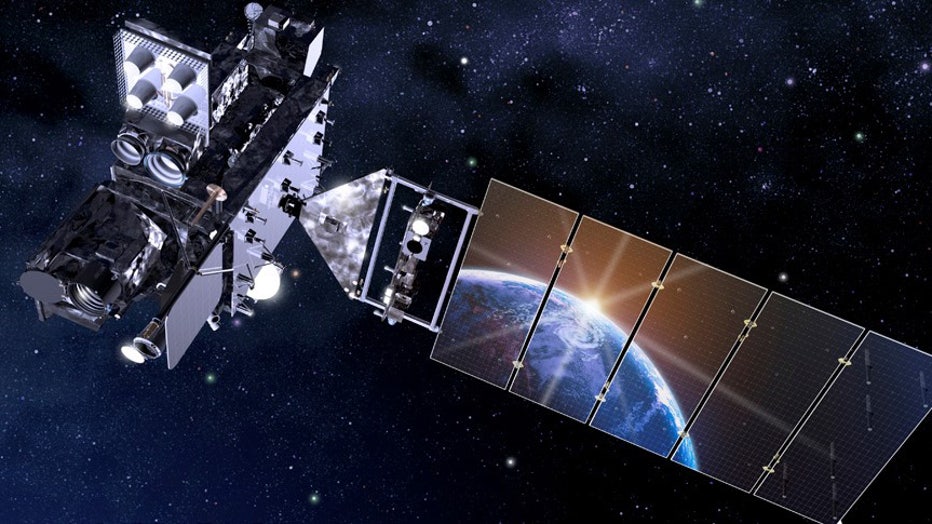GOES-T weather satellite ready for liftoff next week from Florida

NOAA’s Geostationary Operational Environmental Satellite-T (GOES-T) is in view alongside its banner inside the Astrotech Space Operations facility in Titusville, Florida, on Jan. 20, 2022. (Credit: NASA/Ben Smegelsky)
CAPE CANAVERAL, Fla. - An essential piece of forecasting technology is preparing to launch from Florida's coast in less than a week in the form of a high-tech weather satellite that can map lightning and track wildfires from above.
The GOES-T satellite is part of the Geostationary Operational Environmental Satellites (GOES) program, a partnership between NASA and NOAA. The spacecraft will join its sister satellite GOES-16 more than 22,000 miles above Earth and become GOES-18 once in orbit. The new satellite, which has several vital upgrades, will replace the GOES-17 spacecraft currently in orbit.
Combined, the satellites can continuously observe the western hemisphere, improving weather prediction and mapping Earth's weather, oceans and climate every 30 seconds.
A United Launch Alliance Atlas V rocket is poised for liftoff on March 1 from Space Launch Complex 41 at Cape Canaveral Space Force Station. The two-hour launch window opens at 4:38 p.m.
BEFORE NOAA SATELLITES CAN IMPROVE WEATHER FORECASTS, HERE'S WHERE THEY ARE BUILT

An artist’s rendering of GOES-R. (Photo credit: NASA)
The satellite journeyed from Lockheed Martin's facility in Colorado to Florida in the fall and has been at Kennedy Space Center awaiting liftoff since November.
The GOES satellites are built and tested at Lockheed Martin, and L3 Harris Technologies provide the GOES instruments.
GOES-T SATELLITE ARRIVES AT KENNEDY SPACE CENTER IN PREPARATION FOR LAUNCH
Earlier this month, GOES-T was placed inside the fairings that make up the rocket nose cone at Astrotech's facilities in Titusville. Next, the encapsulated satellite journeyed to the launchpad at Cape Canaveral Space Force Station.
ULA hoisted the nose cone with its payload atop the rocket on Thursday, and the launch vehicle will make the slow and steady journey from the hangar to the launchpad over the next few days.
FOX Weather visited the Lockheed Martin clean room where GOES-T was built, and the next satellite in the series GOES-U is being tested.
Arleen Knaub, deputy program manager for GOES at Lockheed Martin, explained the new satellites would provide better image data.
She said the new GOES satellites launched in the last four years have dramatically advanced weather science.
GOES-T also has a new magnetometer to measure Earth's magnetic field, which protects the planet from solar wind.
"If the Earth's magnetic field is declining or changing, we want to know that because then the solar wind can strip away the Earth's atmosphere," Knaub said. "And so that would be very damaging to the Earth compared to climate change."
Knaub said discussions are already underway for the next generation of weather satellites under the GOES series to keep up with improving technology and forecasting.

